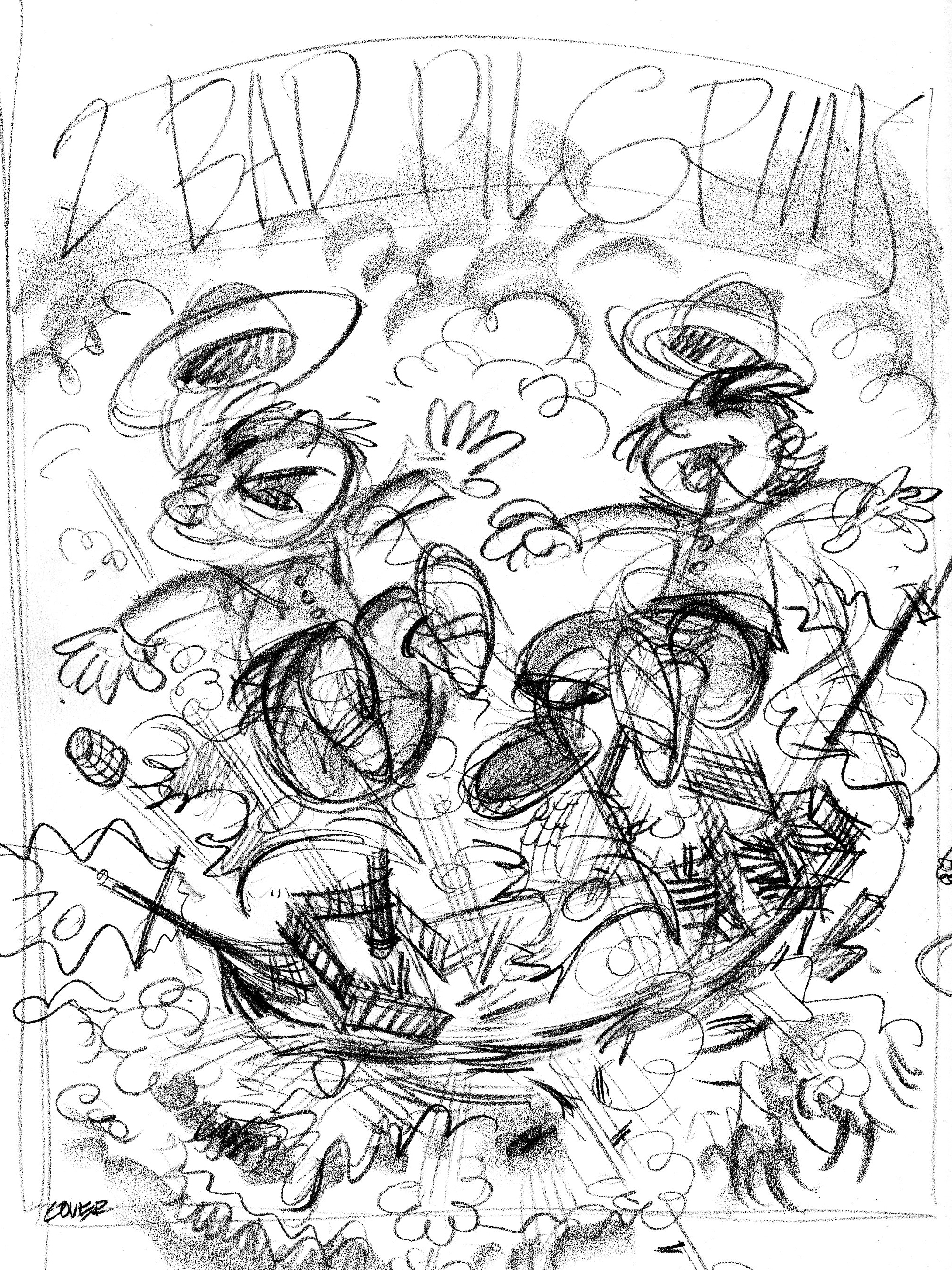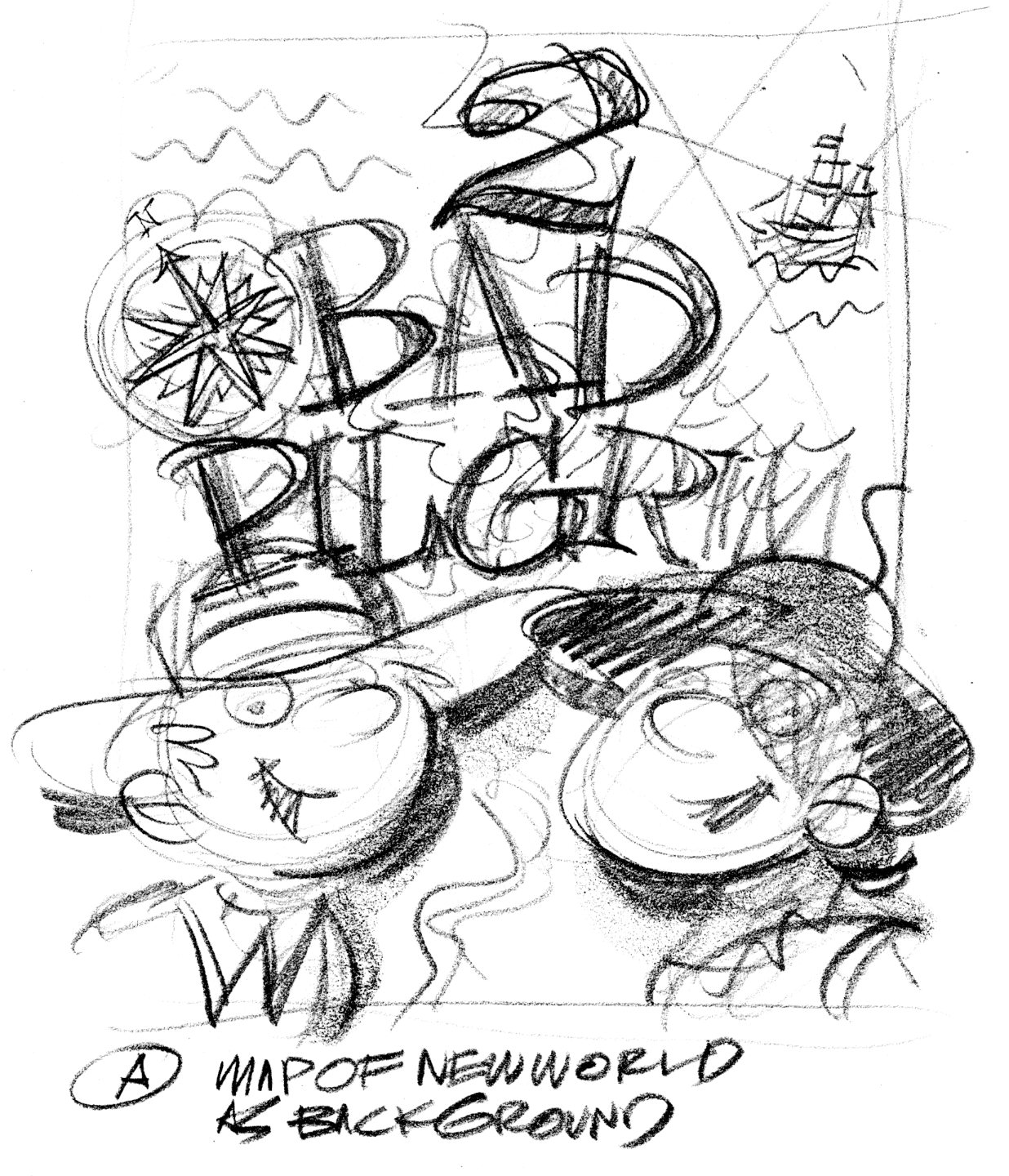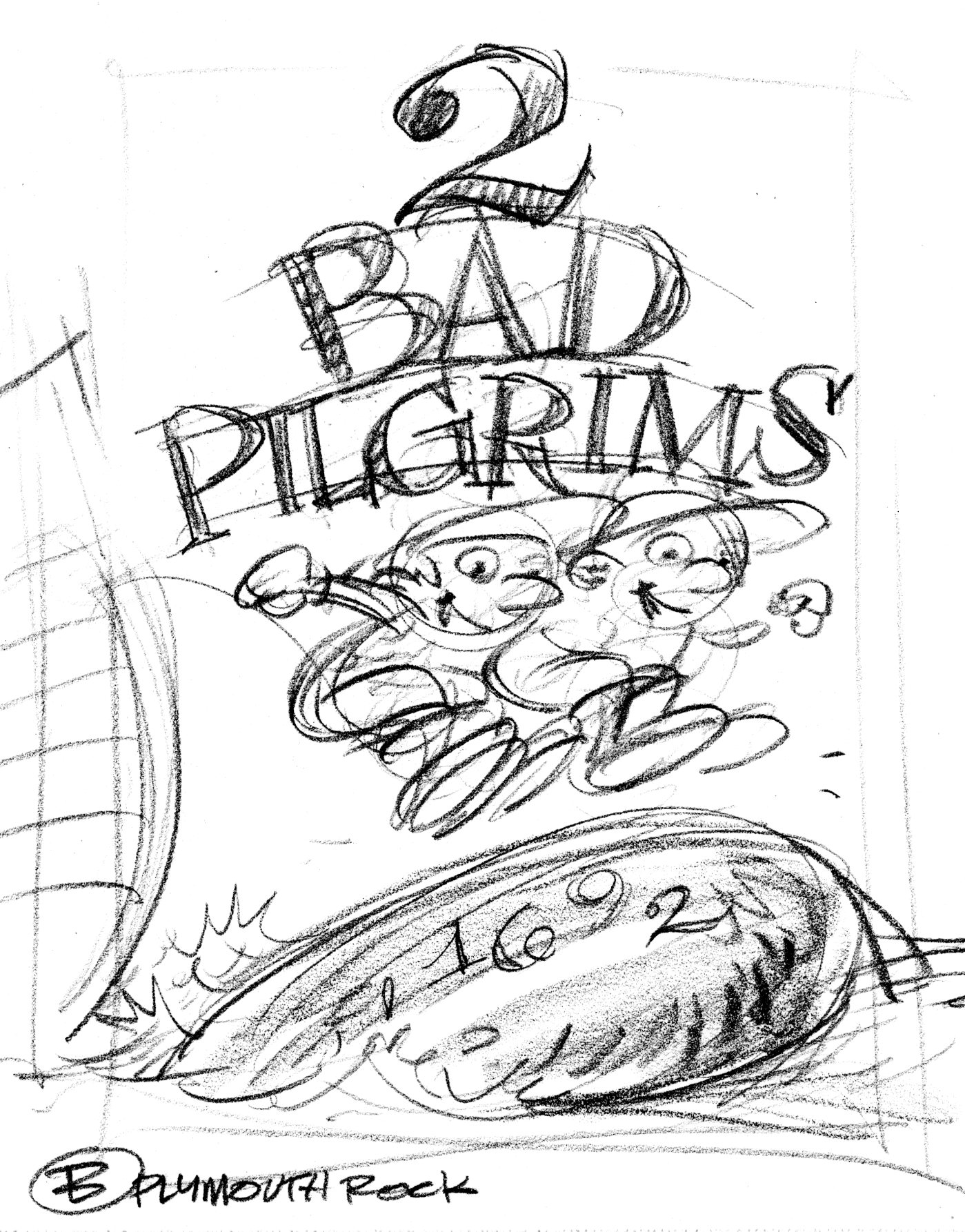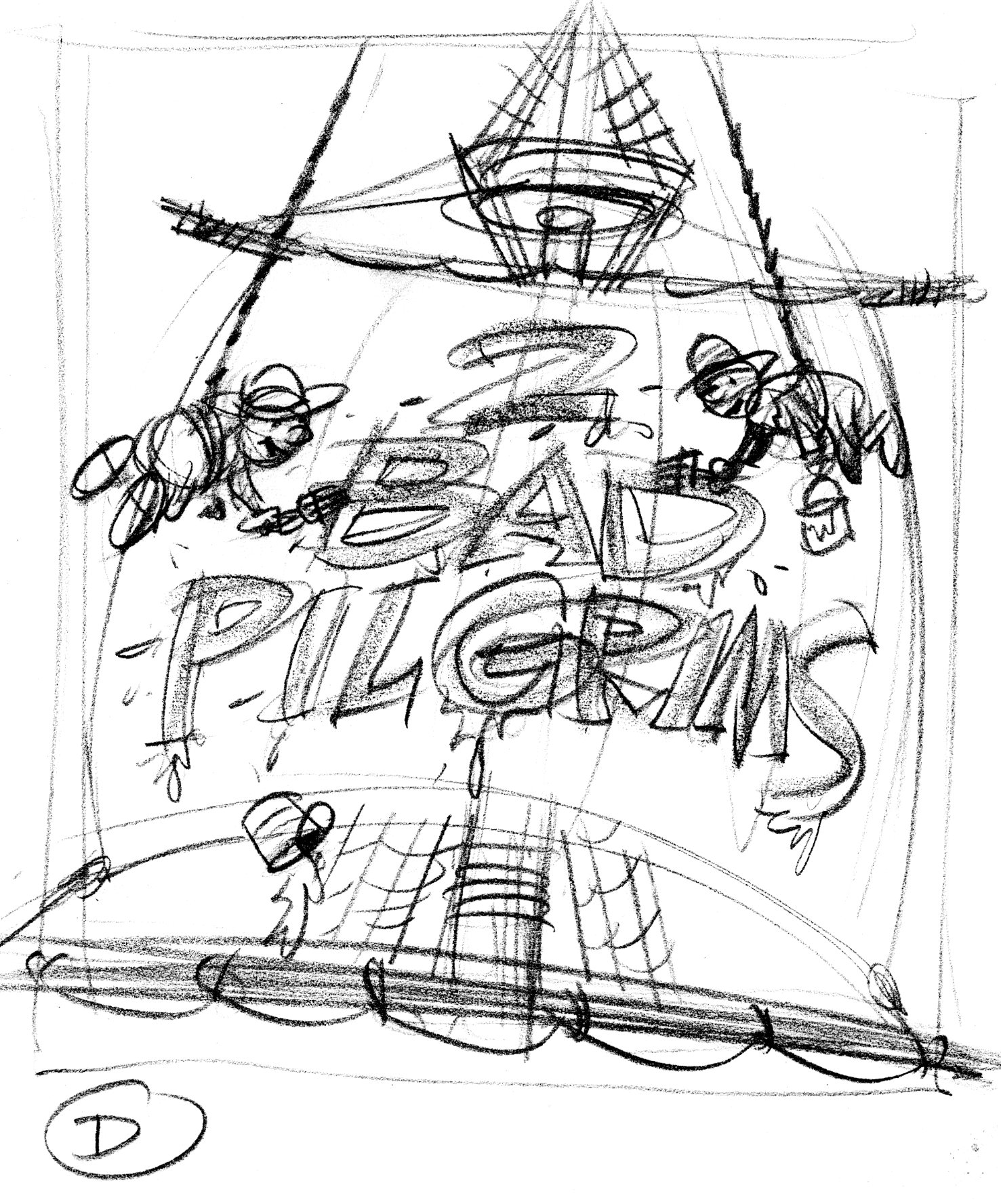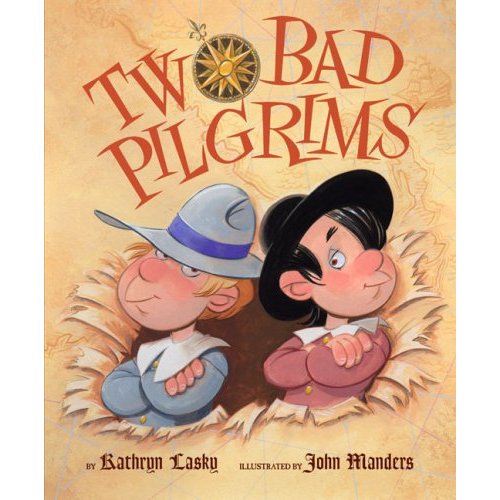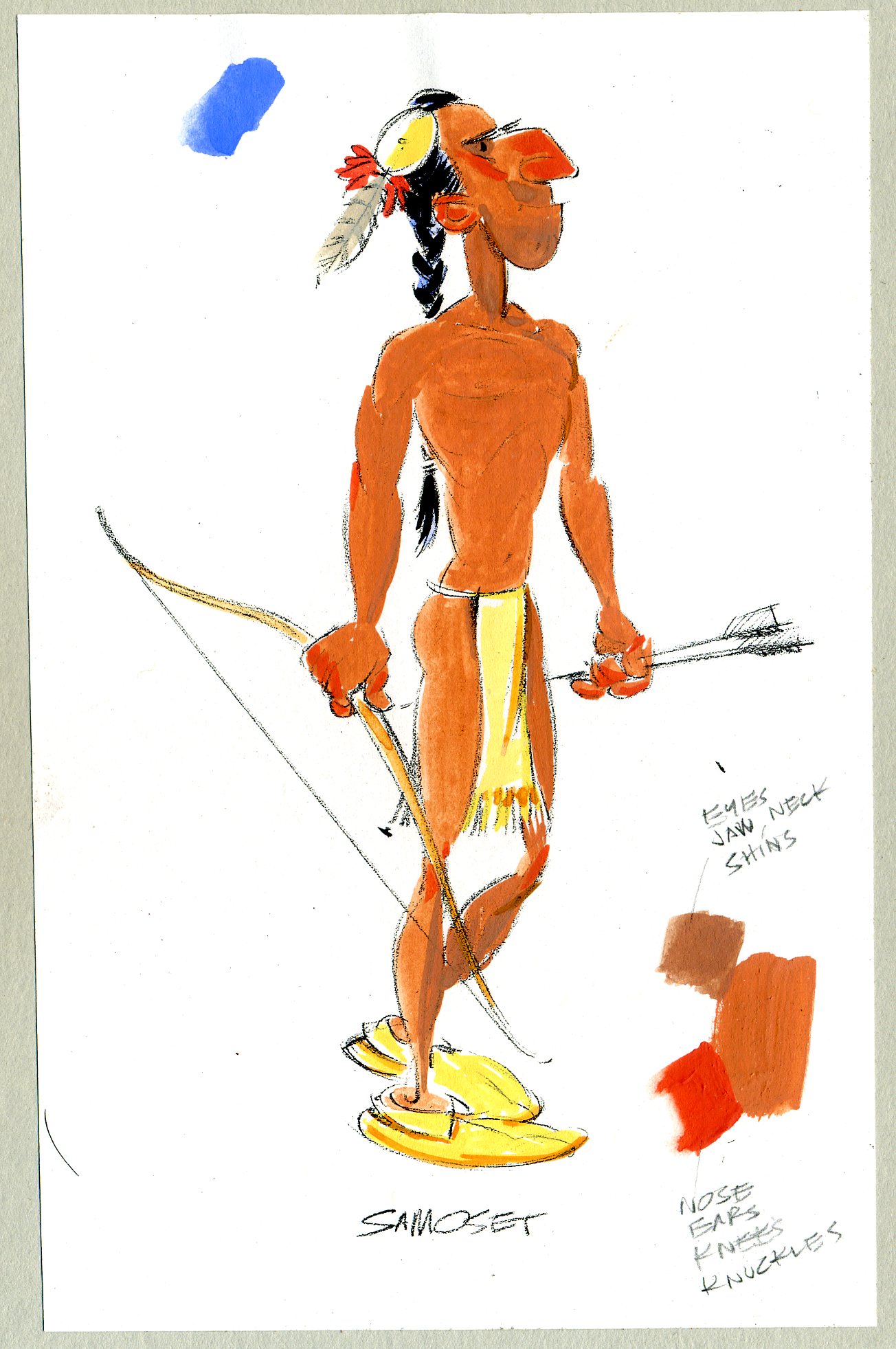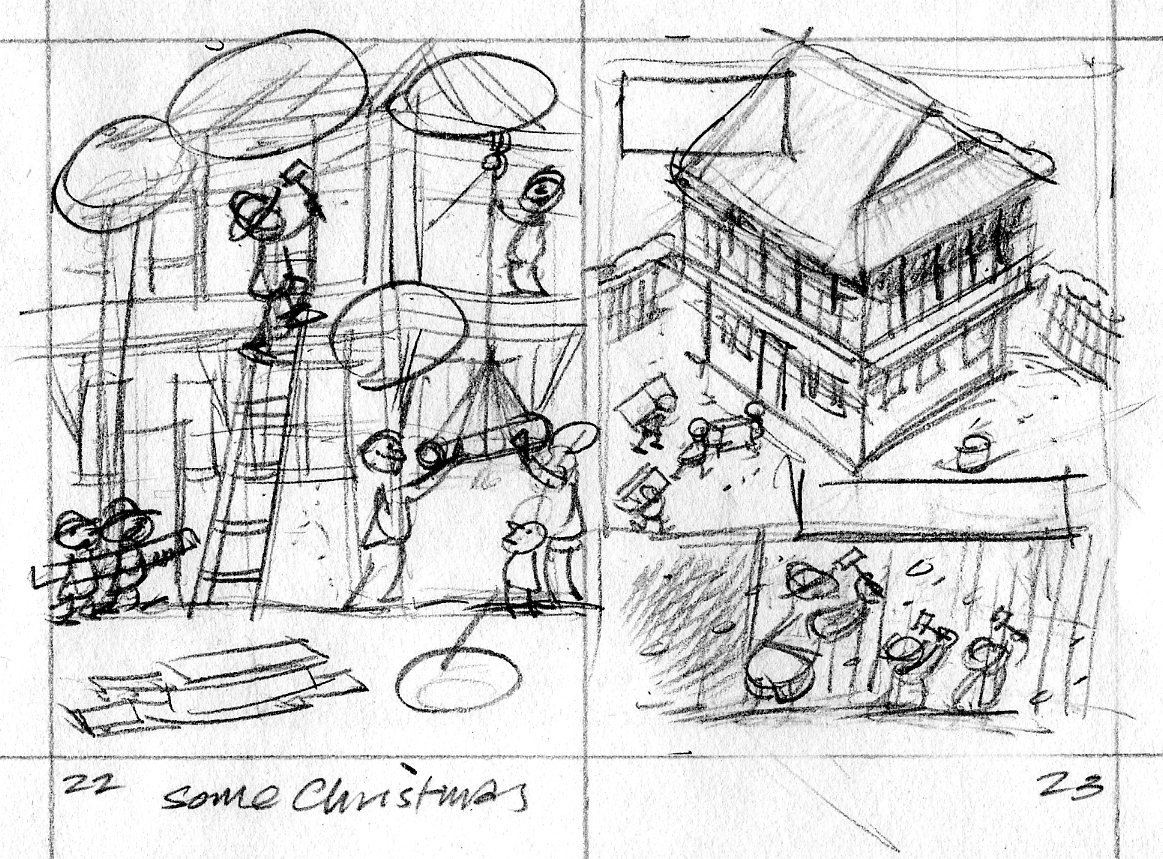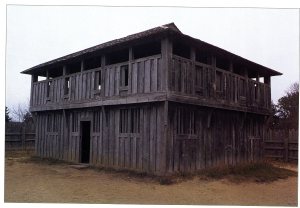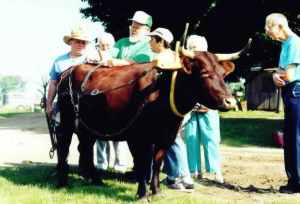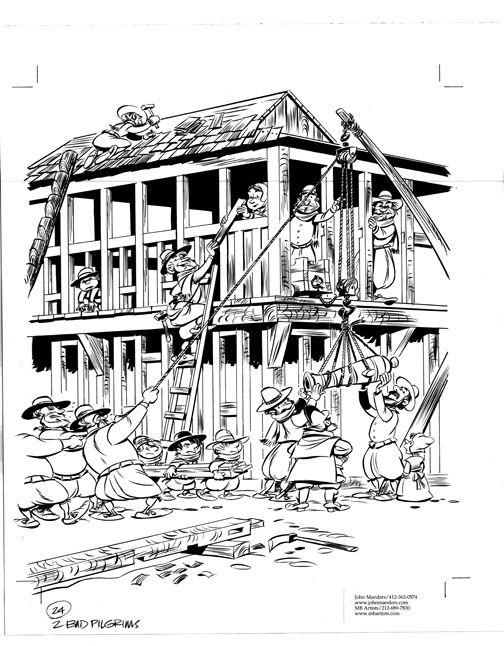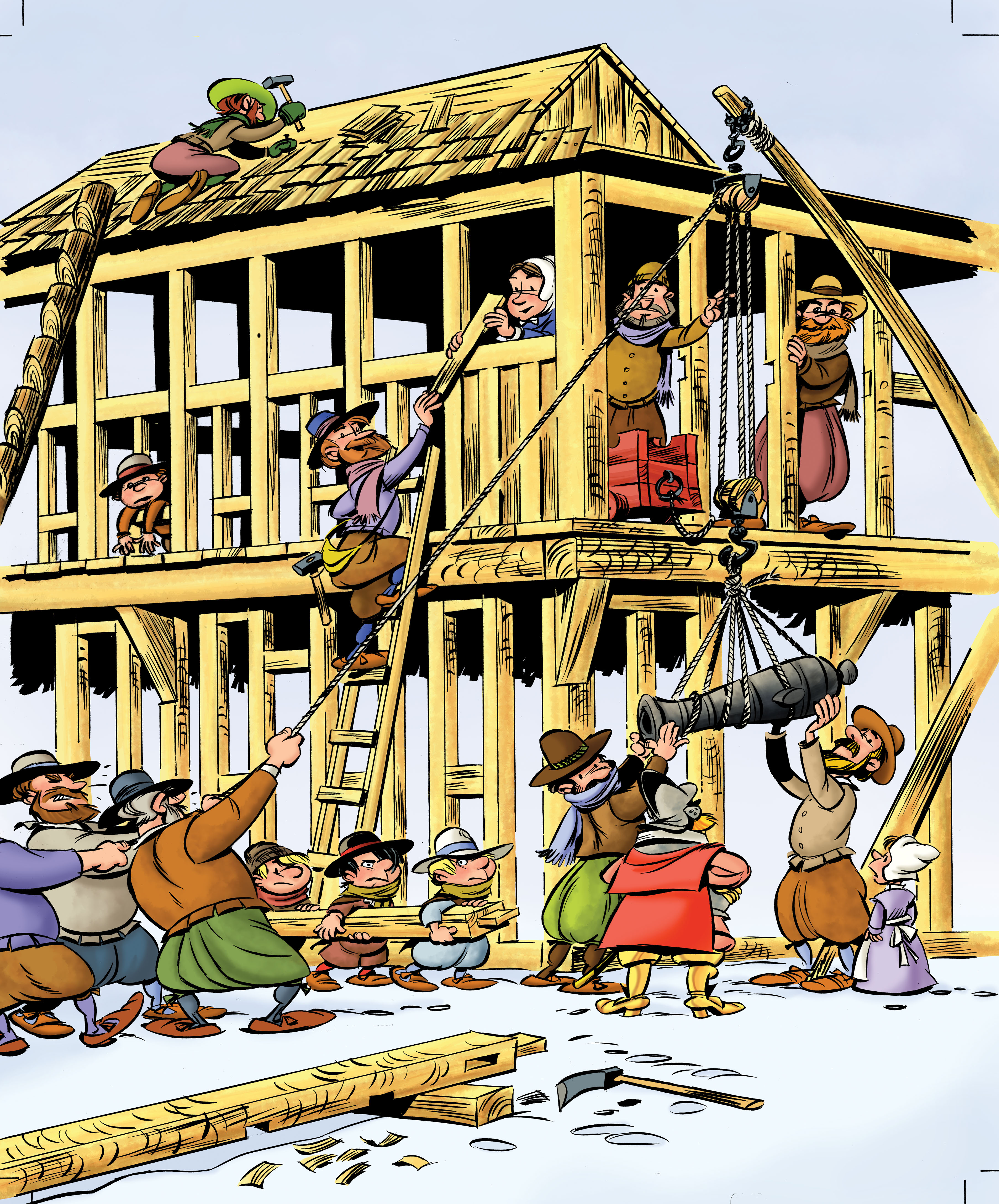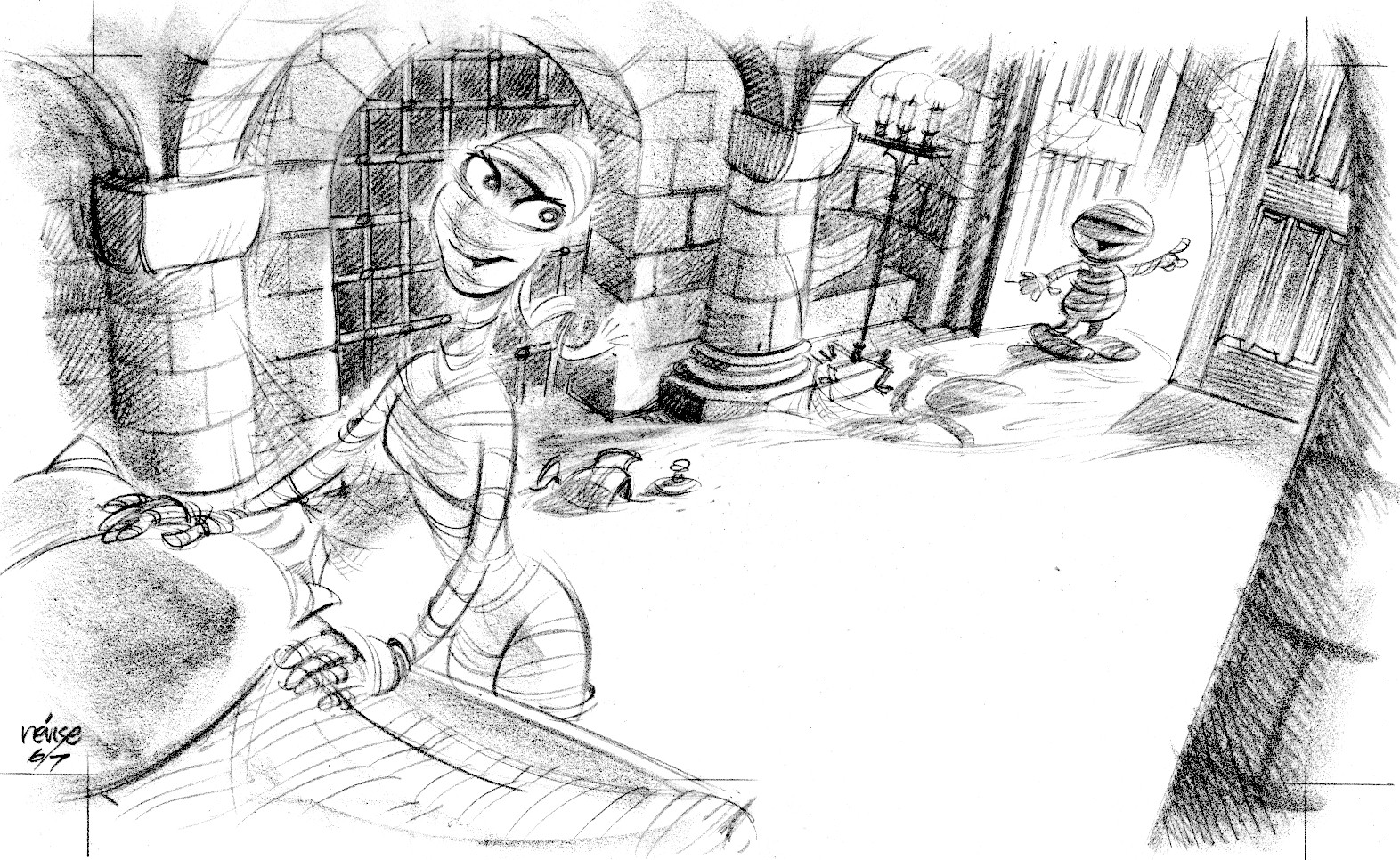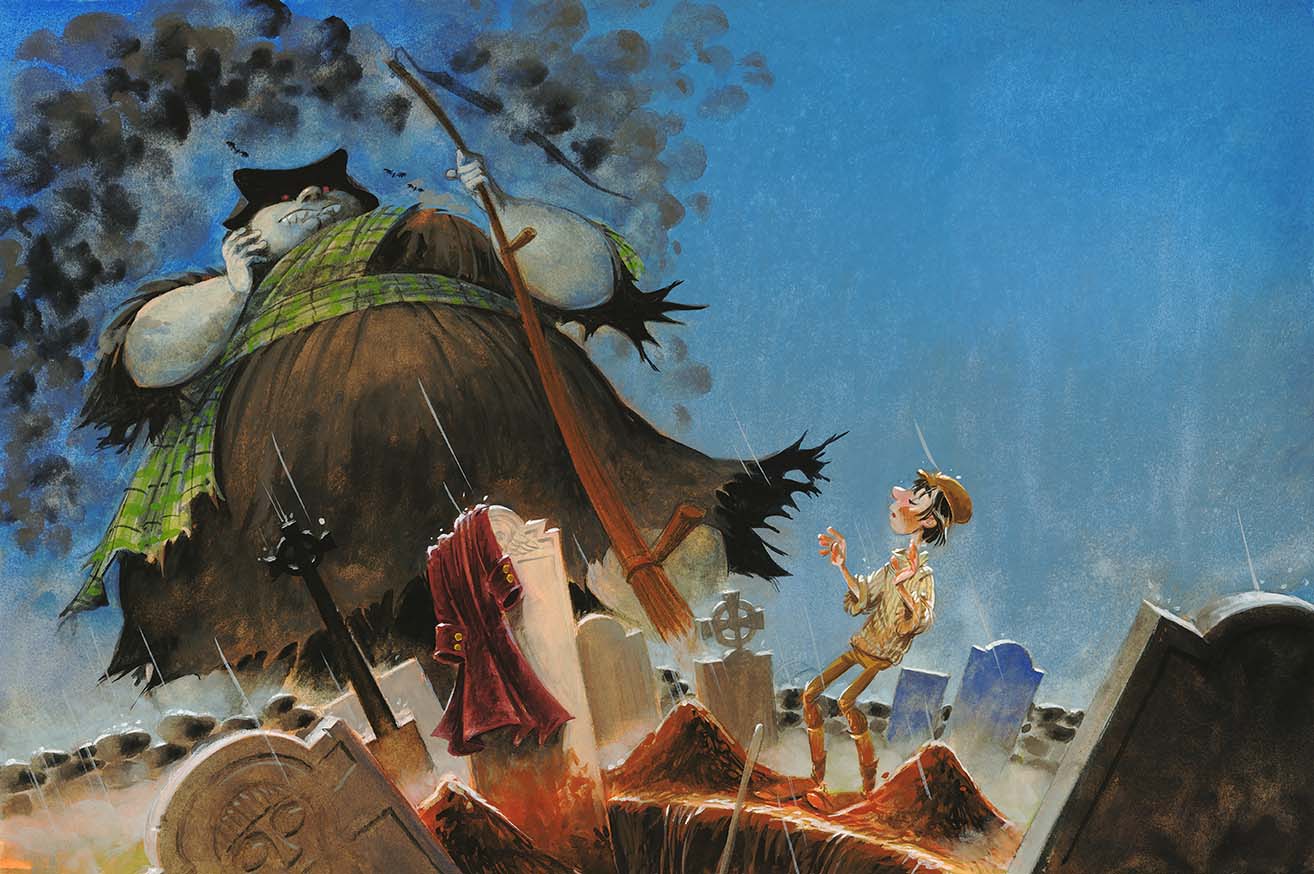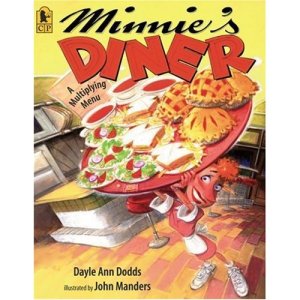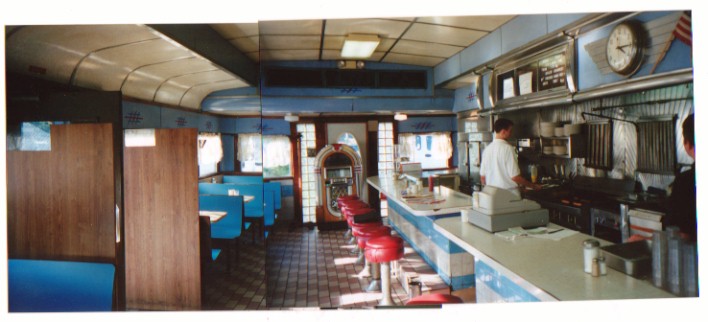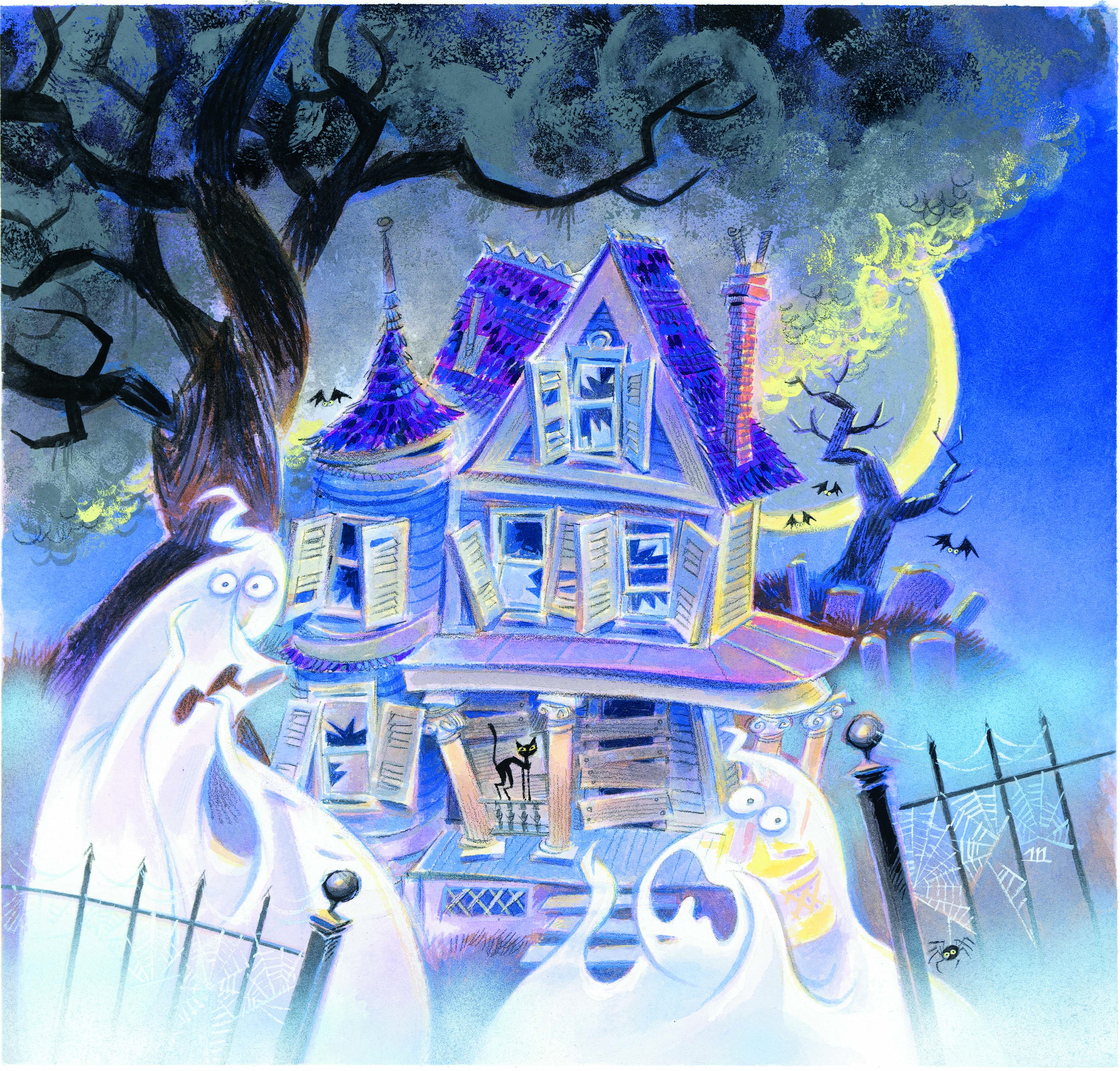Joanie asks:
I work in gouache also and I would like to ask a question if you don’t mind. I have trouble working the background and characters at the same time. I usually end up painting the characters/foreground first and then paint the background around it after the fact. This method has not been working too well for me and I wanted to know what your method is. Do you work the background first and paint your characters on top? Work them at the same time? Any advice you could give me would be greatly appreciated!
I usually work back to front—that is, I start with whatever is furthest in the background and work my way towards the foreground. I leave the characters for last.
By working that way I can use bigger brushes and paint the background with greater abandon. If I’m painting around a character I’ve already finished, I’ll be using teensy-weensy brushstrokes for fear of spoiling the character. Then the illustration almost always looks too tight and—most important—takes too long to paint.
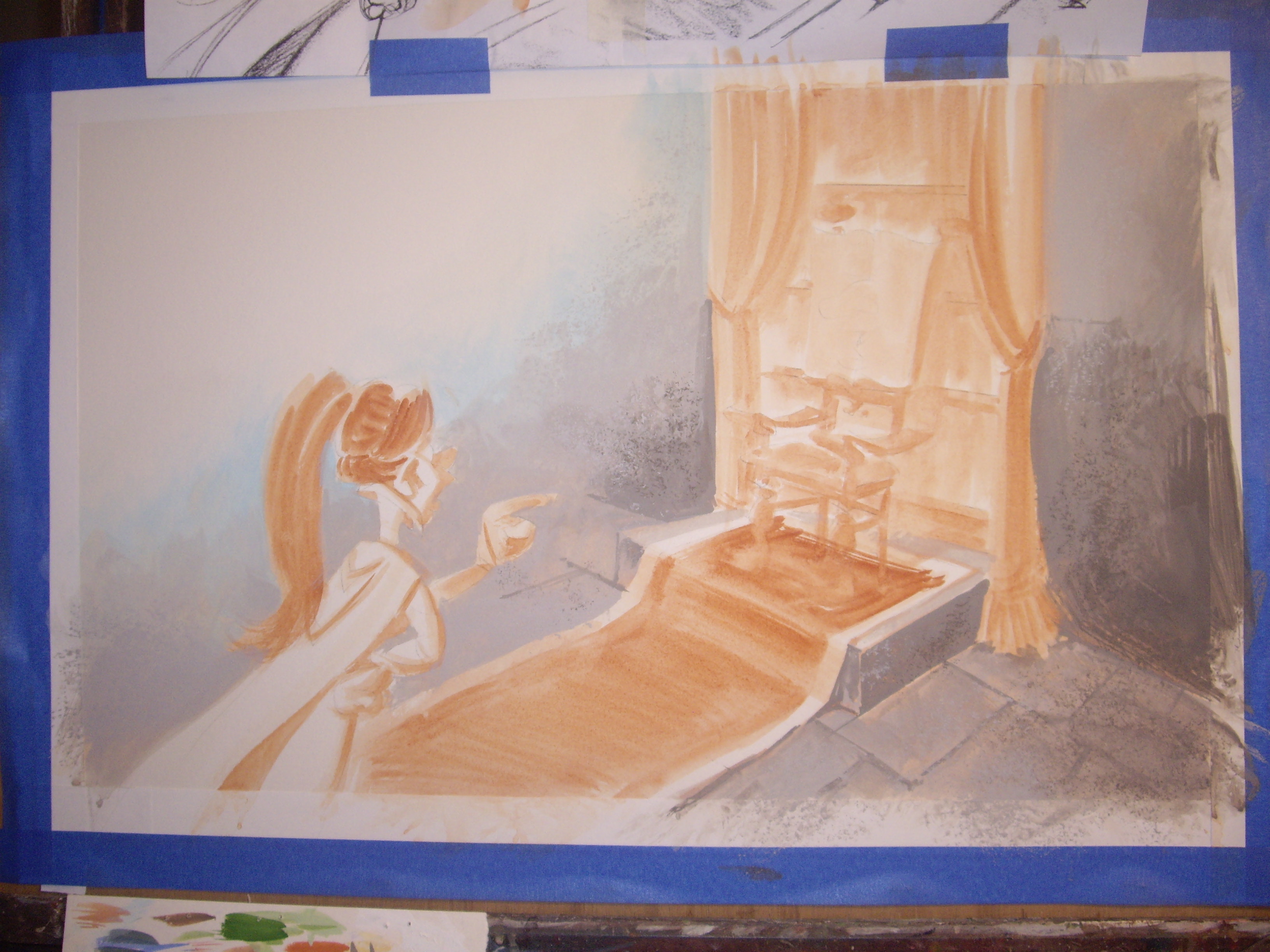
Here’s a scene I’m working on. I’ve begun painting the stone walls, but you can see the burnt sienna underpainting for the girl, carpet and chair.
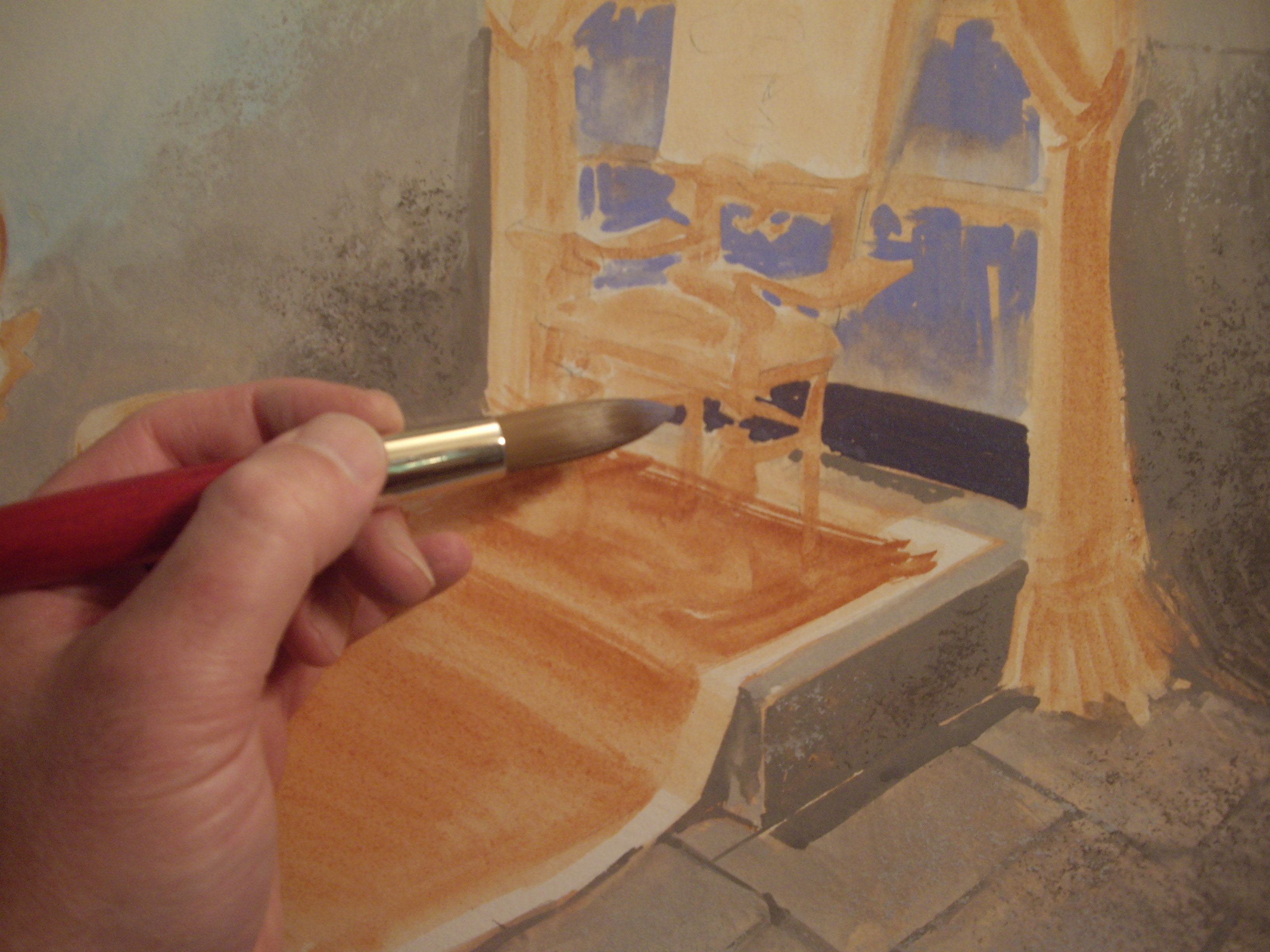
There’s a bookcase behind the chair, so I’m throwing in colors for the books’ spines. Neatness doesn’t count, so I’m using a medium-sized brush.

I’ve already planned what colors I’ll be using for this project. I painted little color sketches to keep track of my palette.
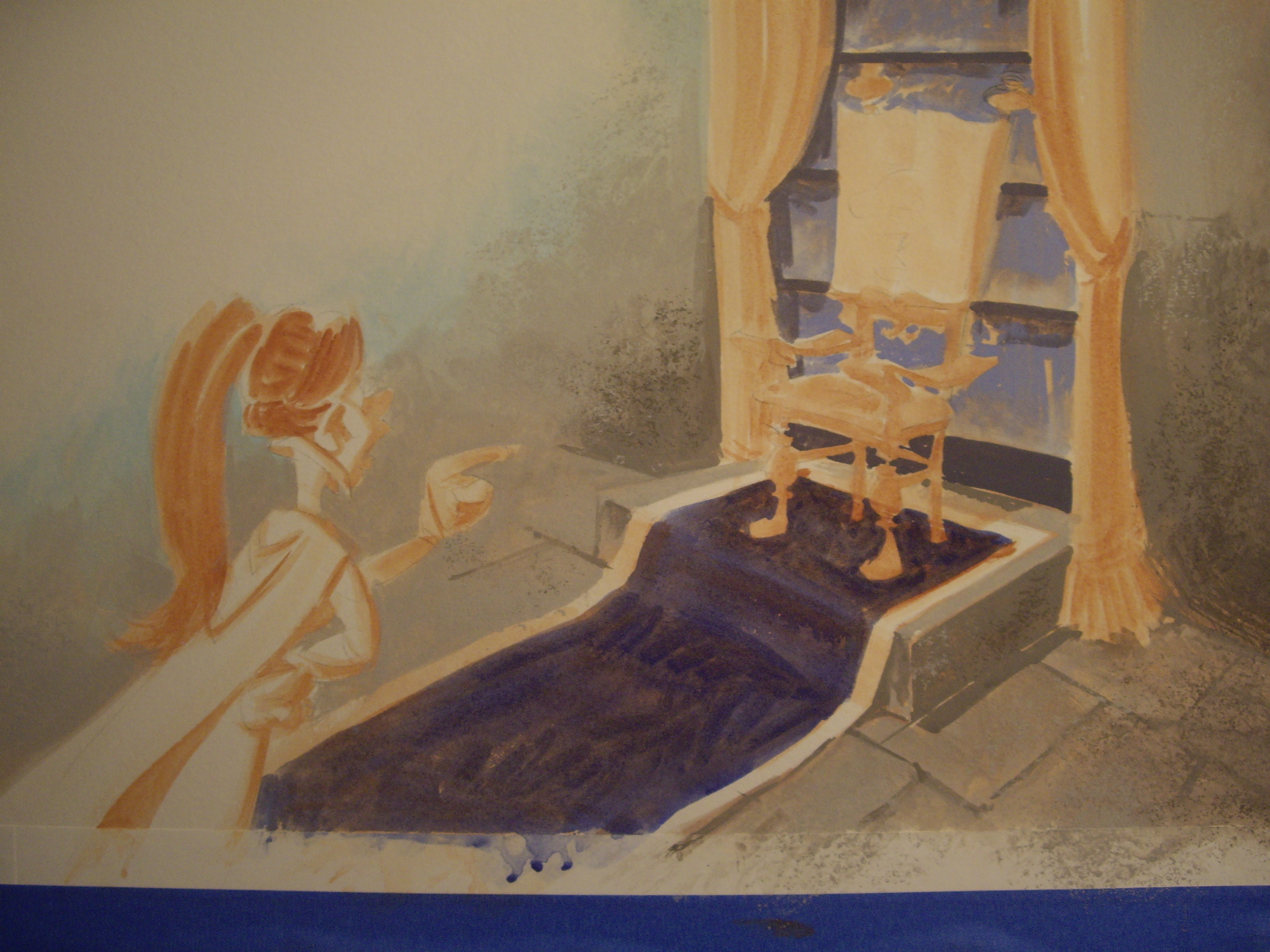


To make the drapery look like velvet, I painted dark green into medium green while it was still wet.


I’m using a small brush with a sharp point for details.

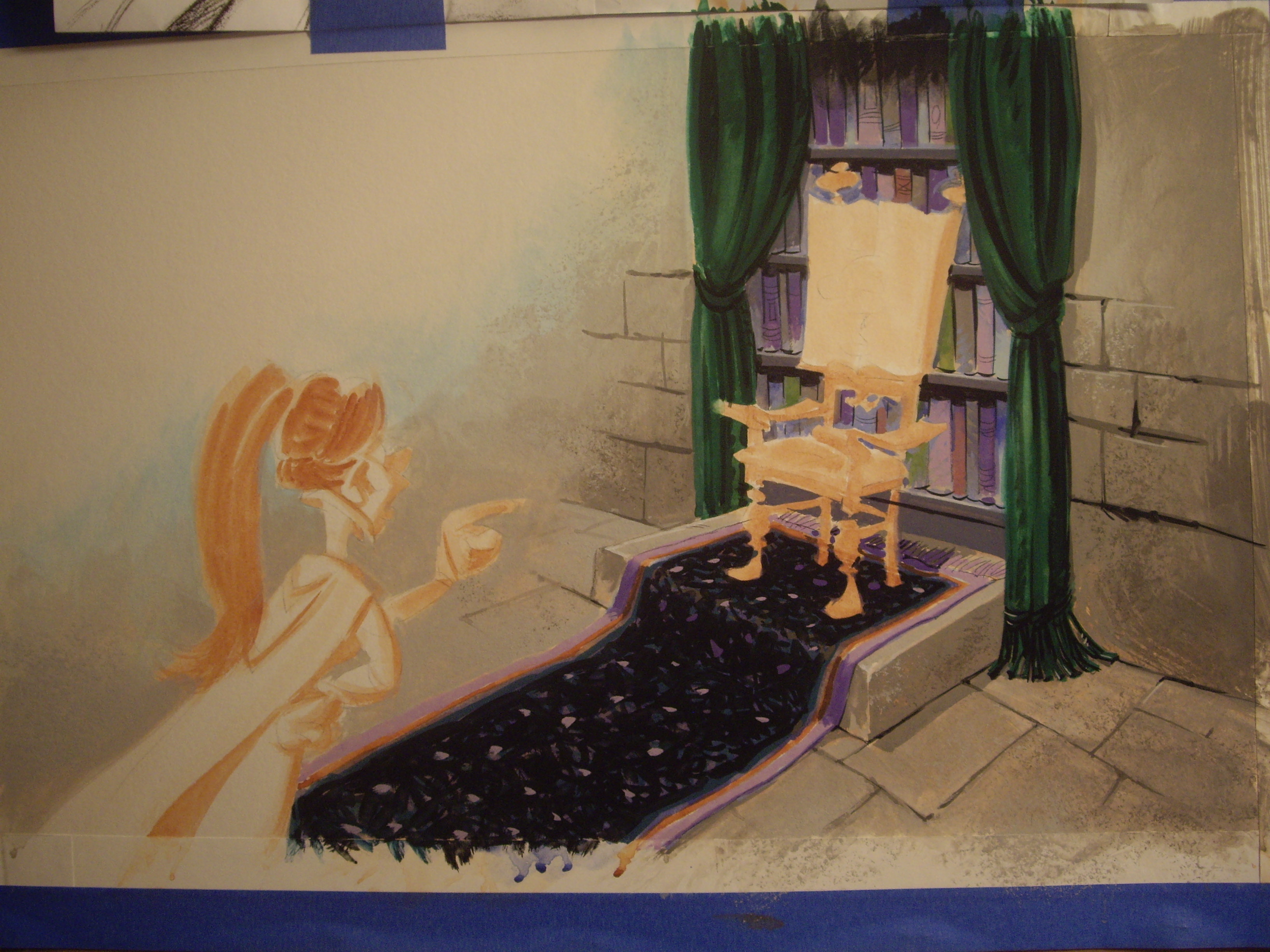
The background’s finished. I’ll add the characters once all the backgrounds for the whole book are finished. This girl appears throughout the book, so I’ll mix up all the colors I need for her and paint her on top of the finished backgrounds. This is how I keep my characters looking consistent.

You can find a continuation of this post here.
